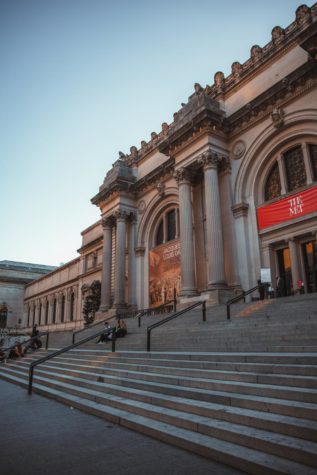Getting Back to the Basics
Paleolithic humans ate many nutritionally-dense foods, like vegetables. The development of agriculture and food processing has given us more food, but not necessarily more healthy nutrients.
October 8, 2016
Many people, including myself, struggle to live a healthy lifestyle. I have tried everything! No matter what, whether I dieted or exercised, I still could not get into shape. However, after doing some research of my own, I found out that the key to living a healthy lifestyle is not modern technology and nutrition, but rather looking to our evolutionary past for answers.
As a science geek, my main interests in science are anthropology, evolution, and nutritional science. Like many misinformed students, I believed that early humans had far worse health than modern humans do. However, according to biological anthropologist Dan Lieberman of Harvard University, our “chimp-like ancestor was like a power athlete… much stronger and faster” than modern humans. In a National Public Radio article, it was revealed that prehistoric teeth were much healthier than ours. Alan Cooper of the Australian Center for Ancient DNA discovered that bacteria in prehistoric mouths were actually beneficial to their hosts’ health. Many of these species of bacteria were those that used energy from meat, vegetables, and nuts. These bacteria were “friendly” bacteria, ones that helped us fight off more deadly pathogens. With the rise of sedentary agriculture, however, disease-causing bacteria that could use carbohydrates were more “fit” than those that previously were in our mouths. This, along with many other studies, led me to believe that the early humans had it right.
The next question I asked myself was, “How can I simulate pre-agricultural history in the modern world?” I concluded that there are three barriers between pre-agricultural bliss and our deadly modern society: food, light, and action.
Firstly, food is a major issue in our modern society. The Paleolithic and modern diets are very different. Laura Dolson, a nutritional expert and writer, says that a Paleolithic diet consisted of meat (cooked or uncooked), few nuts, vegetables, and a little honey. Nowadays, we mostly eat carbohydrates, which have been shown to cause heart disease. Although ancient peoples consumed “less food,” the nutritional difference was huge. Paleolithic people ate more than 100 different species of food. This included a significant amount of protein, lots of vegetable fiber, and more nutrient-dense food. Even though they ate less, the increased amount of nutrients made all the difference, equipping our prehistoric ancestors to perform better than modern humans ever will. Thus, I concluded that a human seeking to live a healthy life must move towards this paleolithic diet.
Secondly, light is a disease-causing menace in our society. A recent New York Times article talks about how sleep can be affected by our surroundings. The article unveils a new concept: that your eyes are an internal clock. In your body, the hormone melatonin is released so that you can sleep. Blue light inhibits the production of this chemical. During the day, the sun emits blue light, which keeps you awake by stopping the production of melatonin. For modern humans, mobile devices emitting blue light reduce our sleeping time. When “cavemen” went to sleep, there was no blue light outside. Thus, their bodies produced more melatonin, allowing these early humans to sleep longer. A lack of sleep has been linked to weight gain and subsequently many different diseases. Today, people can purchase orange glasses that block out blue light.
The third and final barrier to evolutionary success is activity. Early Homo sapiens worked fewer hours, but they did more labor-intensive work. According to LiveScience, the early human lifted much more than an Olympic athlete would in a day. The level of work an Olympic athlete does will never match that of an early human. To solve the problem of inactivity, activities that can simulate hunting, such as weight training and running, must be done once every week. By solving the three problems of modern society, we can live better and healthier lives.












